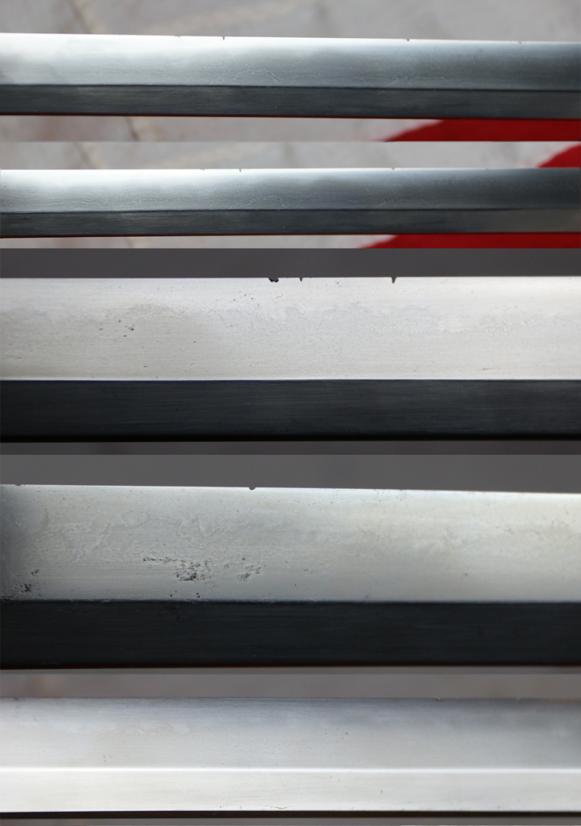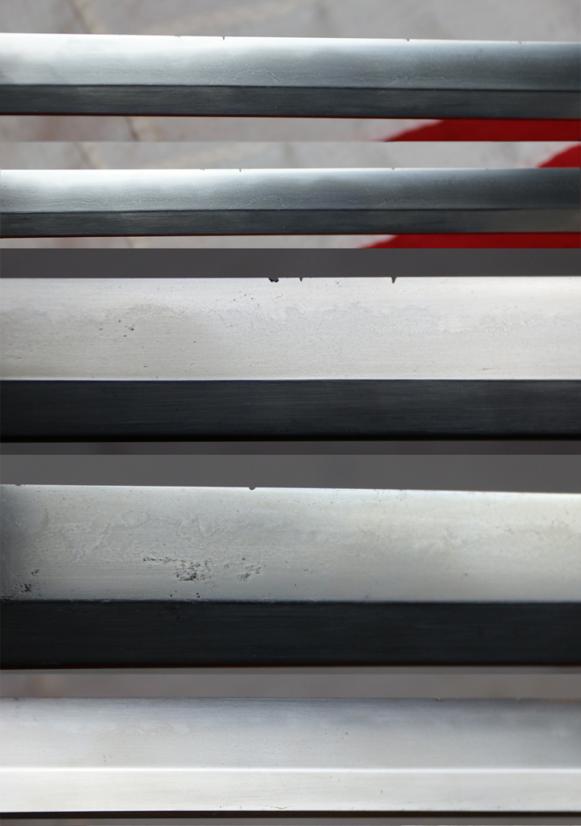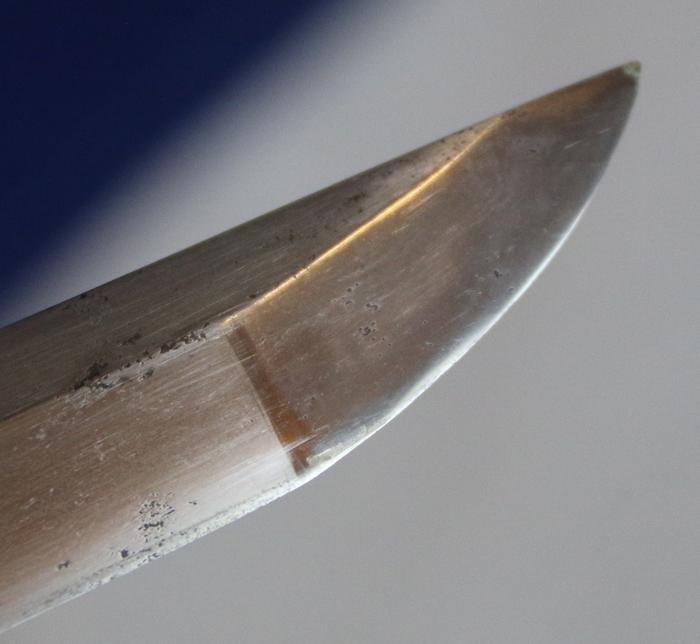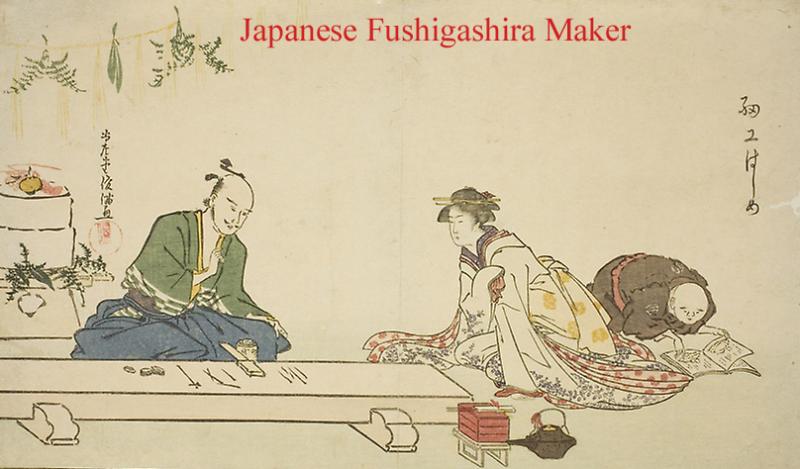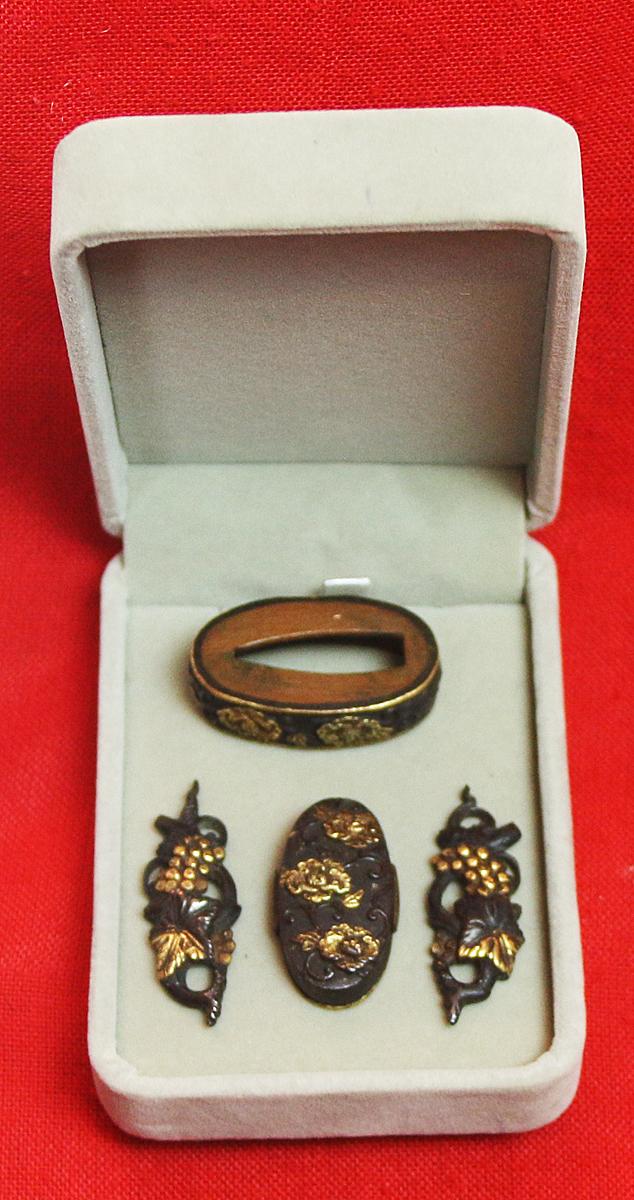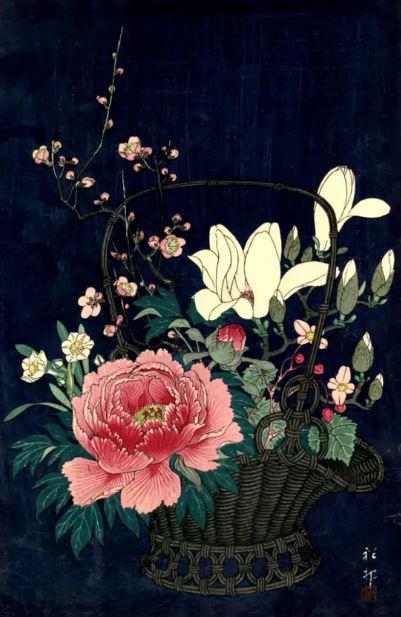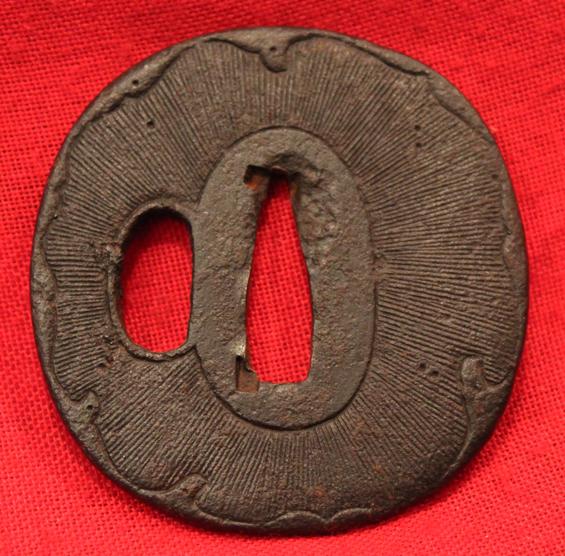A Wonderful Ancient Nambokochu Katana Blade Signed Kuniyoshi Circa 1380 to 1400 Over 600 Years Old. Goto Shakudo Nanako & Gold Floral Fuchigashira and Menuki Sword Fitting
This wonderful ancient blade, was made in Japan, in the European timeframe, before the battle of Agincourt in 1415,
It has a very slight curvature to the blade, and it is still retaining its original signature by Kuniyoshi. It is almost a single edged version of the ancient 'ken' based straight sword. The 'ken' style of straight double edged swords were the earliest form of all samurai swords, used by the earliest Japanese samurai in the 900's. Then they developed into single edged straight blades, then the curvature was added by the 1100 to 1200's
The superb blade is still its original last Edo period polish around 90% and the hamon is stunning and incredibly active. The Nanboku-cho period (Northern and Southern Courts period) Spanning from 1336 to 1392, it was a period that occurred during the formative years of the Muromachi
bakufu of Japan's history.
The Imperial seats during the Nanboku-cho period were in relatively close proximity, but
geographically distinct. They were conventionally identified as:
Northern capital : Kyoto
Southern capital : Yoshino.
During this period, there existed a Northern Imperial Court, established by Ashikaga Takauji in Kyoto, and a Southern Imperial Court, established by Emperor Go-Daigo in Yoshino.
Ideologically, the two courts fought for fifty years, with the South giving up to the North in 1392.
However, in reality the Northern line was under the power of the Ashikaga shoguns and had little real independence. This sword would very likely have been used in the Onin War (1467-1477) which led to serious political fragmentation and obliteration of domains: a great struggle for land and power ensued among bushi chieftains and lasted until the mid-sixteenth century. Peasants rose against their landlords and samurai against their overlords, as central control virtually disappeared.
The katana has fabulous Goto scholl mounts, with shakudo nanako, and gold peony decorated fuchi kashira, and shakudo and gold menuki of grape vines with vine leaves and grapes, possibly by Kazutada. The fittings show the technique of Uttori. The gold on these pieces are not plated, but rather have gold foil applied in such a very difficult manner, that only the finest craftsmen have the ability to attain skill required for the technique
Shakudo, which is a billon of gold and copper (typically 4-10% gold, 96-90% copper) which can be treated to form an indigo/black patina resembling lacquer. Unpatinated shakudo Visually resembles bronze; the dark color is induced by applying and heating rokusho, a special patination formula.
Shakudo was historically used in Japan to construct or decorate katana fittings such as tsuba, menuki, and kozuka; as well as other small ornaments. When it was introduced to the West in the mid-19th century, it was thought to be previously unknown outside Asia, but recent studies have suggested close similarities to certain decorative alloys used in ancient Egypt, Greece, and Rome. The fittings are set within their two bespoke wooden display cases. Antique Japanese koshirae Japanese samurai sword mounts and fittings are considered as fine object d'art in their own right, and have been collectable as individual items or sets, since the Edo period. They were often removed from swords, mounted in small cases such as these, and respectfully admired for display as items of the highest quality workmanship, and symbols of the noble samurai, in their own right.
Tetsu Mokko Katana Edo period tsuba With Chiselled Willow Tree
The swords tsuka and saya hilt and scabbard will be fitted by our conservator to the sword, with all the fittings. The blade and fittings and tsuba are photographed here separate, unfitted to the sword, at present. It will then be re-photographed in December once it is all remounted together.
Blade overall including nakago 35 inches long.
Code: 23963
Price
on
Request




